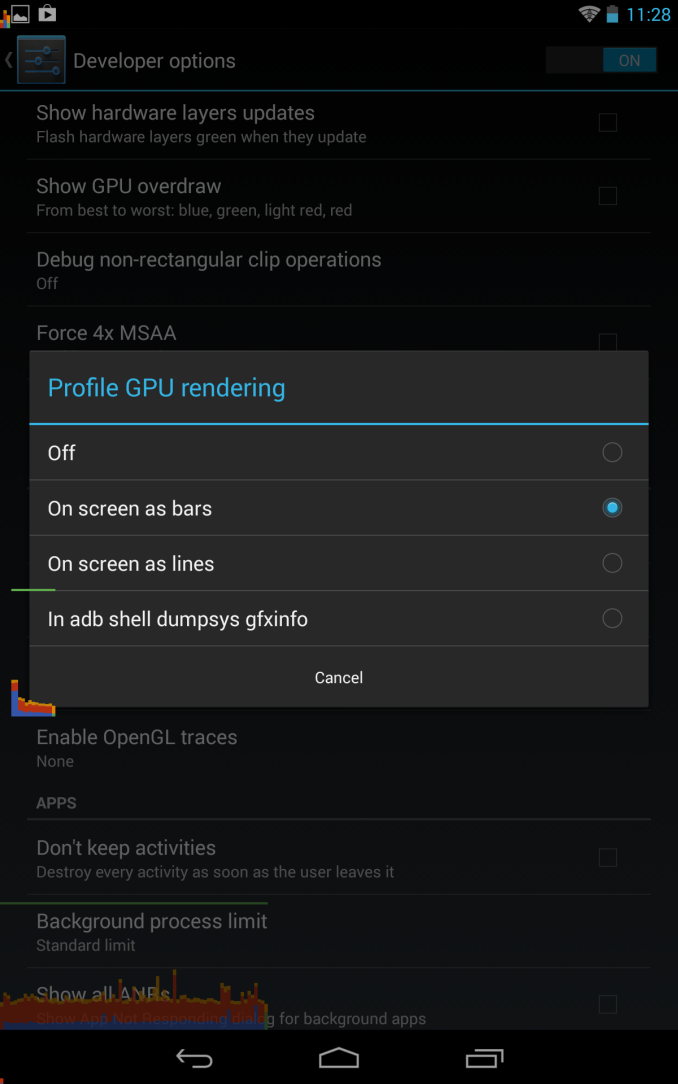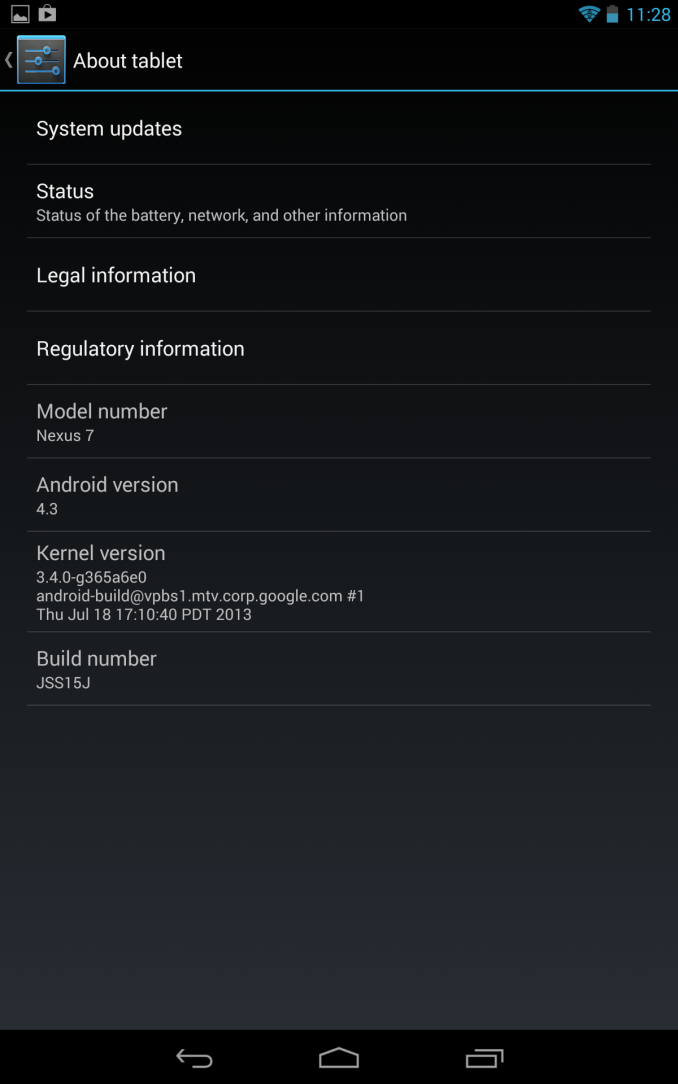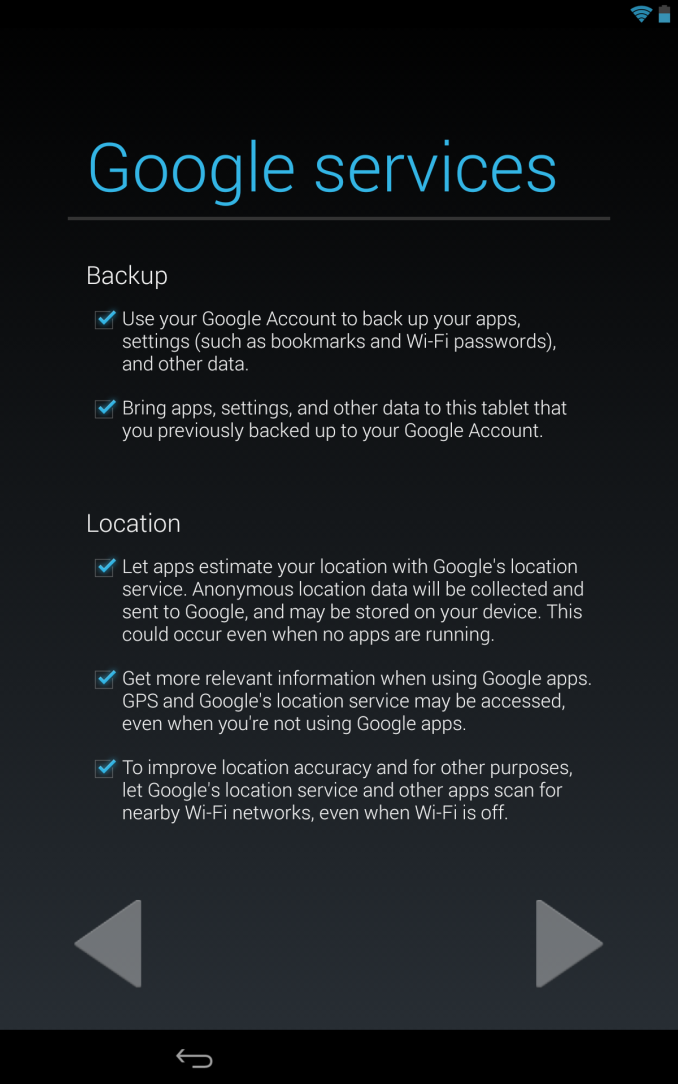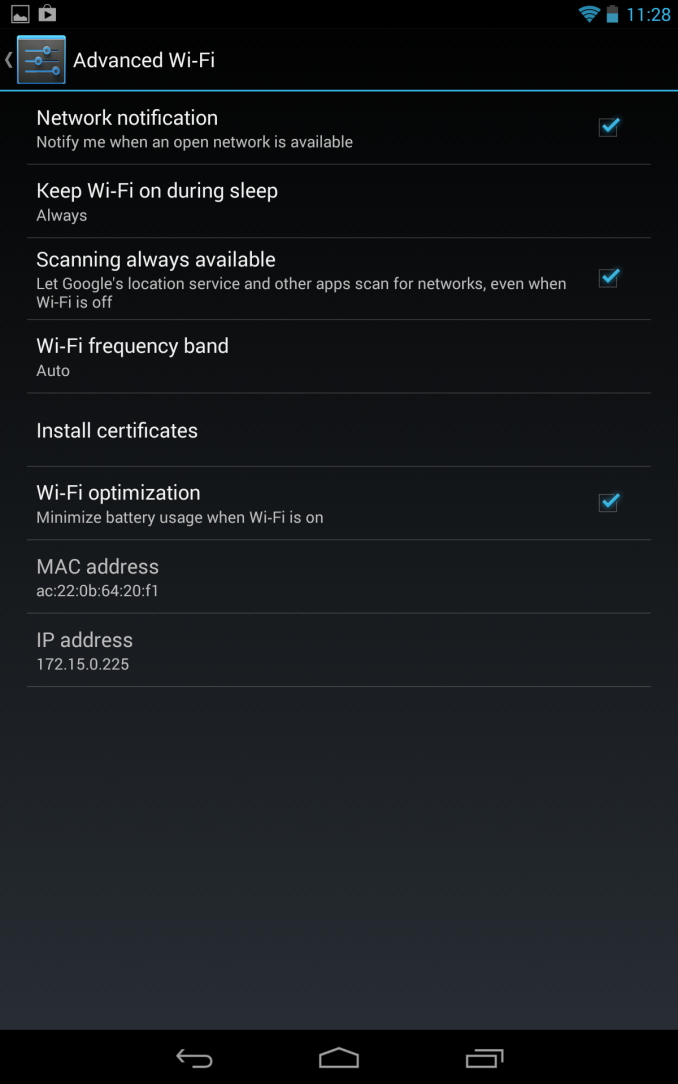What's New in Android 4.3
by Brian Klug on July 24, 2013 2:26 PM EST- Posted in
- Smartphones
- Android
- Mobile
- Tablets
- Android 4.3

As expected, today Google made a management release for Android 4.2 official at their breakfast with Sundar event, bumping the release up to Android 4.3 and introducing a bunch of new features and fixes. The update brings everything that Google alluded was coming during Google I/O, and a few more.
On the graphics side, the big change is inclusion of support for OpenGL ES 3.0 in Android 4.3. Put another way, Android 4.3 now includes the necessary API bindings both in the NDK and Java for ES 3.0. This release brings the numerous updates we’ve been over before, including multiple render targets, occlusion queries, instances, ETC2 as the standard texture compression, a GLSL ES 3.0, and more.
We’ve also talked about the changes to the 2D rendering pipeline which improve performance throughout Android, specifically intelligent reordering, and merging, which cuts down on the number of draw calls issued to the GPU for 2D scenes. This improvement automatically happens with Android 4.3 and doesn’t require developer intervention, the pipeline is more intelligent now and optimizes the order things are drawn and groups together similar elements into a single draw call instead of multiple. In addition like we talked about, non-rectangular clips have hardware acceleration, and there’s more multithreading in the 2D rendering pipeline.
Google has been trying to increase adoption of WebM and along those lines Android 4.3 now includes VP8 encoder support for Stagefright. The platform APIs are updated accordingly for the ability to change settings like bitrate, framerate, and so forth. New DRM modules are now added as well, for use with MPEG DASH through a new MediaDRM API.
On the connectivity side we get a few new features, first is the WiFi scan mode which we saw leaked in a bunch of different ROMs. This exposes itself as a new option under the Advanced menu under WiFi settings, and during initial out of box setup. This new scanning mode allows Google to continue to further build out its WiFi AP location database to improve WiFi-augmented location services for its devices.
Like we saw hinted not so subtly at Google I/O, 4.3 also includes support for Bluetooth low energy (rebranded Bluetooth smart) through the new Broadcom-sourced Bluetooth stack. This OS-level support for BT Smart APIs will do a lot to ease the API fragmentation third party OEMs have resorted to in its absence.
Likewise Bluetooth AVRCP 1.3 is now included which supports better metadata communication for car audio and other devices, as well as better remote control.
Security gets improvements as well, Android 4.3 moves to SELinux MAC (mandatory access control) in the linux kernel. The 4.3 release runs SELinux in permissive mode which logs policy violations but doesn’t break anything at present.
A number of other security features are changed, including fixes for vulnerabilities disclosed to partners, better application key protection, removal of setuid programs from /system, and the ability to restrict access to certain capabilities per-application. Lastly there’s a new user profiles feature that allows for finer grained control over app usage and content.
We'll be playing around with the new features on the new Nexus 7 as well as the other Nexus devices getting the update (Nexus 4, Nexus 10, Nexus 7 (2012), and Galaxy Nexus). Google has already posted the factory images for those devices as well if you're too impatient to wait for the OTA and want to flash it manually.
Source: Google


















69 Comments
View All Comments
DanNeely - Wednesday, July 24, 2013 - link
Profiles on a phone are mostly useful for parents handing their young kids a phone as a pacifier. No risk of the kid sending a rude email to your boss or going crazy with micro transactions in a pay to win game if they're only given access to a separate profile.DanNeely - Wednesday, July 24, 2013 - link
IIRC when first launched, android profiles were only available on tablets because of a Nokia patent on doing them on a phone. If they're available on phones now, has the patent expired or should we expect to see another round of patent infringement lawsuits filed by Nokia in the near future.Death666Angel - Wednesday, July 24, 2013 - link
... or they licensed it or they found another way of doing it.Samus - Thursday, July 25, 2013 - link
what sucks is Nokia hasn't used profiles since Symbian AnnaKrysto - Thursday, July 25, 2013 - link
I don't think it's available on a phone now either.But what a bullshit patent from Nokia "a way to do X...on a phone" and bam, they have a patent. These sort of patents are of the most annoying kind.
Vigneshj - Friday, July 26, 2013 - link
Some turn around solutions like guest mode (or incognito mode) could be possible and most likely on upcoming custom roms. It seems lot of users like to have multi user mode in mobiles and definitely Devs might have been looking into it by now.! Albeit, I expected Google to get licensed on Nokia's patent to make that much needed feature available in 4.3, but still have to wait :(erikiksaz - Wednesday, July 24, 2013 - link
I wouldn't expect such large changes from each android version. Google has decoupled most of its core services from android so that users don't need to rely on having the newest android version to have the most updated version of gmail, music, play, or maps. It's smarter to have it this way.Newer android versions will probably only have deeper changes or UI changes.
cmikeh2 - Wednesday, July 24, 2013 - link
Exactly. The casual user cares less for being able to have the most recent version of Android and would rather just be able to experience new features hassle free. The best example of this is Google Play Services. You don't notice that it is updated but Google can provide new APIs to developers without interference from OEMs or cellular operators. Personally I want to see the distribution of Google Play Services versions across Android similar to how it's done with Android versions.Evil804 - Thursday, July 25, 2013 - link
Exactly. Maps, music, gmail, and pretty much all the core services got major updates recently separate from the OS to help people out with service providers taking forever to update devices. Had we gotten all the new updated apps as part of 4.3 people would be talking about it being the best update ever.twotwotwo - Wednesday, July 24, 2013 - link
It's interesting that Google has shifted to updating their apps piecemeal. They've been working on Maps, Chrome, Gmail (the tabs), Music, etc. but--all those updates are independent of 4.3.Perhaps it gives them more control. Browser.apk is customized by manufacturers, and updates come out as pieces of new Android releases that carriers have to test. Chrome for Android, on the other hand, is updated when Google wants to update it and Samsung and Verizon don't get to say anything about that.